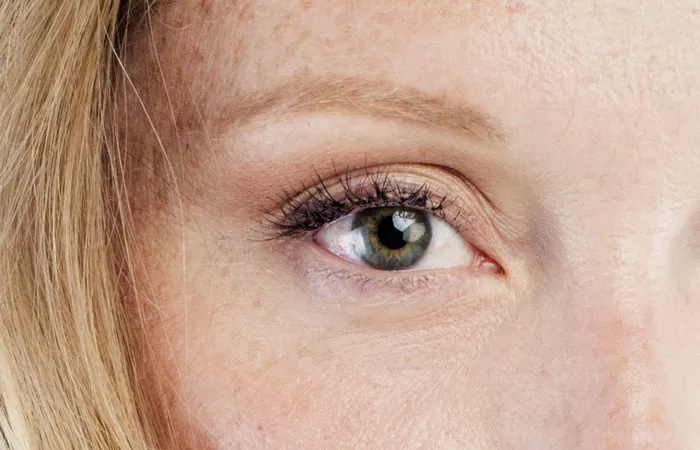Brown eyes are a common eye color, but they can also be a source of concern for some individuals. While brown eyes are generally considered normal and healthy, there are certain conditions and factors that can affect their appearance and health. In this article, we will explore the causes of brown eyes and the treatment options available to treat brown eyes.
What Causes Brown Eyes?
Brown eyes are caused by the presence of melanin, a pigment that gives color to the skin, hair, and eyes. The amount and distribution of melanin in the iris, the colored part of the eye, determines the color of the eyes. Brown eyes have a higher concentration of melanin in the iris, while blue eyes have less melanin.
While brown eyes are generally considered normal and healthy, there are certain conditions and factors that can affect their appearance and health. Some of these include:
Eye Injuries: Eye injuries, such as a blow to the eye or a foreign object in the eye, can cause brown spots or discoloration in the iris.
Age: As we age, the amount and distribution of melanin in the iris can change, causing the eyes to appear lighter or darker.
Sun Exposure: Prolonged sun exposure can cause the eyes to develop brown spots or freckles on the iris.
Genetics: Eye color is determined by genetics, and certain genes can influence the amount and distribution of melanin in the iris.
Medical Conditions: Certain medical conditions, such as albinism or Waardenburg syndrome, can affect the amount and distribution of melanin in the iris, causing brown eyes to appear lighter or darker.
Treatment Options for Brown Eyes
While brown eyes are generally considered normal and healthy, there are certain treatment options available to improve their appearance or address underlying medical conditions. Some of these treatment options include:
Colored Contact Lenses: Colored contact lenses can be used to change the appearance of brown eyes. These lenses come in a variety of colors and can be used to enhance or change the natural color of the eyes.
Laser Eye Surgery: Laser eye surgery, such as LASIK or PRK, can be used to correct vision problems or improve the appearance of the eyes. These procedures use a laser to reshape the cornea, the clear front part of the eye, to improve vision or change the appearance of the eyes.
Eye Drops: Eye drops, such as Latisse, can be used to darken the eyelashes, making the eyes appear more vibrant and youthful.
Medical Treatment: If brown spots or discoloration in the iris are caused by an underlying medical condition, such as albinism or Waardenburg syndrome, medical treatment may be necessary to address the condition and improve the appearance of the eyes.
Sun Protection: To prevent brown spots or freckles on the iris caused by sun exposure, it is important to wear sunglasses and a hat when spending time outdoors, and to use sunscreen around the eyes.
Factors to Consider Before Choosing a Treatment Option
Before choosing a treatment option for brown eyes, it is important to consider several factors, including:
Cost: The cost of treatment can vary depending on the type of treatment chosen and the location of the clinic. Patients should consult with their doctor to determine the cost of the procedure and whether it fits within their budget.
Risks and Potential Complications: While most treatment options for brown eyes are generally considered safe, there is still a risk of complications, such as infection, scarring, or vision problems. Patients should discuss the potential risks with their doctor before undergoing any treatment.
Results: The results of treatment can vary depending on the type of treatment chosen and the individual patient’s needs and circumstances. Patients should discuss their goals and expectations with their doctor to determine if the treatment is right for them.
Recovery Time: Some treatment options, such as laser eye surgery, may require a period of downtime for recovery. Patients should discuss the expected recovery time with their doctor before undergoing any treatment.
Choosing a Provider
When choosing a provider for treatment of brown eyes, patients should consider several factors, including:
Experience: The provider’s experience and expertise in performing the procedure are important factors to consider. Patients should choose a provider who has a proven track record of success in treating brown eyes.
Credentials: Patients should choose a provider who is licensed and has the necessary credentials and training to perform the procedure.
Reviews: Patients should read reviews from previous patients to get an idea of the provider’s bedside manner, skill, and overall satisfaction with the treatment.
Consultation: Patients should schedule a consultation with the provider to discuss their goals, expectations, and any concerns they may have about the treatment. The provider can provide a personalized treatment plan and estimate the cost of the procedure based on the patient’s individual needs and circumstances.
Conclusion
Brown eyes are a common eye color, but they can also be a source of concern for some individuals. While brown eyes are generally considered normal and healthy, there are certain conditions and factors that can affect their appearance and health. Treatment options for brown eyes include colored contact lenses, laser eye surgery, eye drops, medical treatment, and sun protection. Before choosing a treatment option, patients should consider the potential risks and benefits, as well as the cost and recovery time. Patients should choose a provider who is experienced, licensed, and has a proven track record of success in treating brown eyes.


